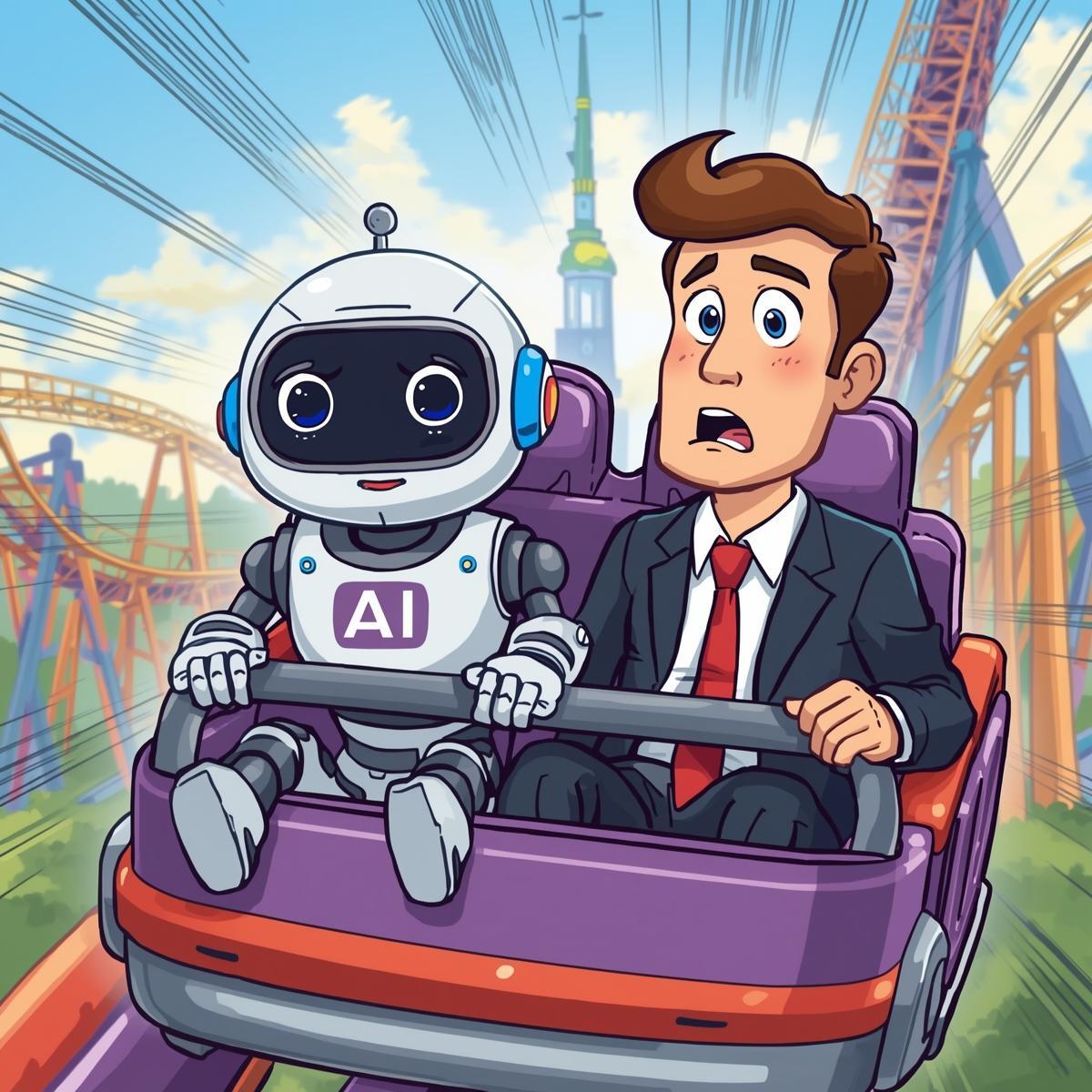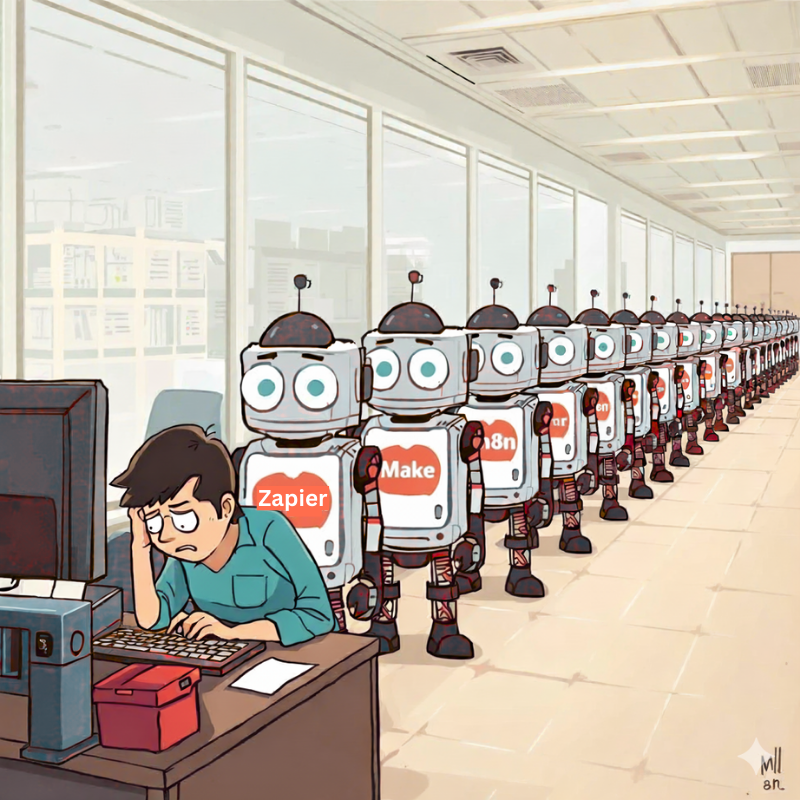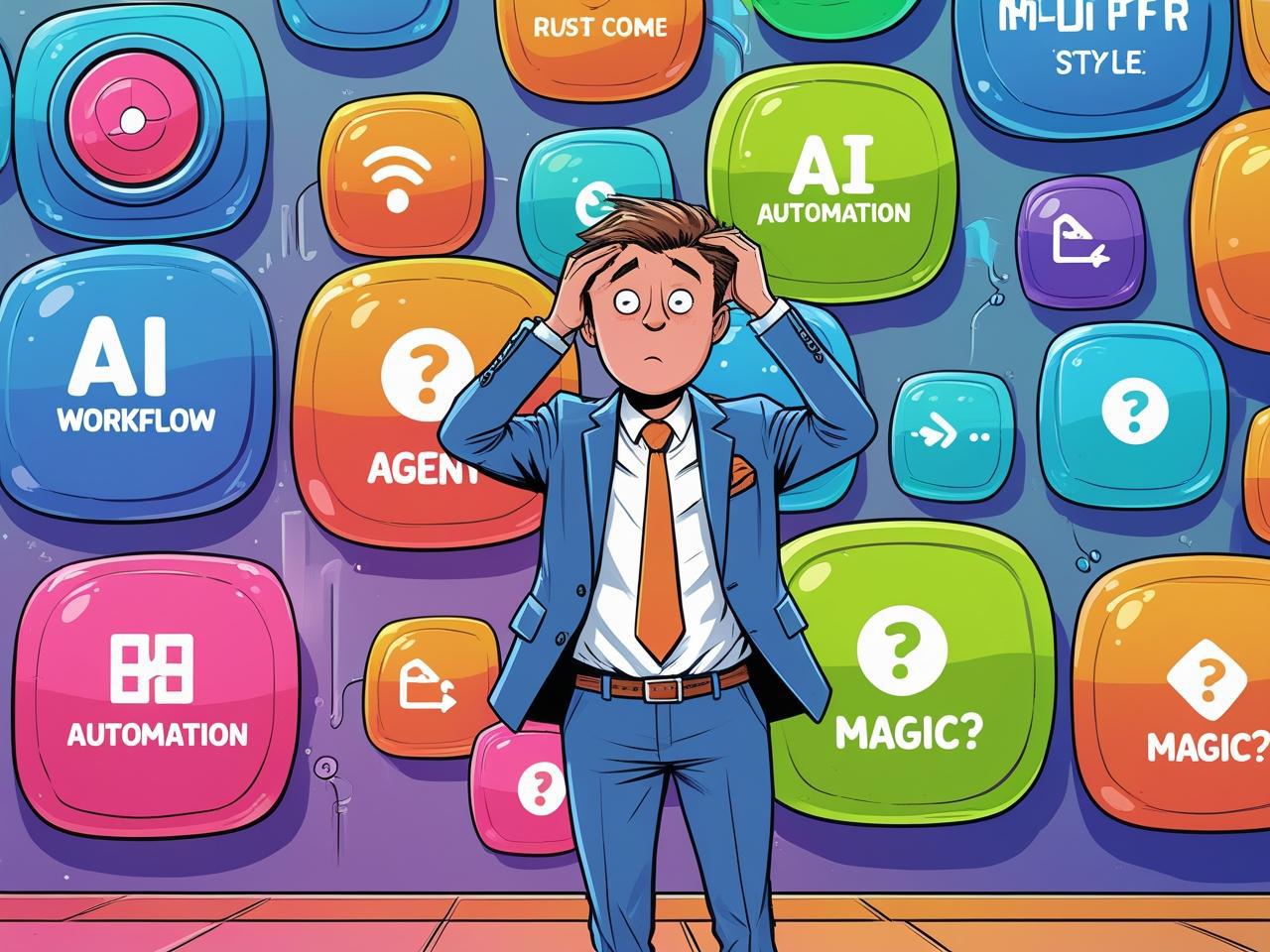Blogs from
Future CoLab 3000
-
The AI Reality Towards 2026: Productivity Gains, Hallucinations and Hard KnocksOctober 19, 2025 at 1:00 PM
AI adoption has surged across industries, but the results tell a mixed story.
Nearly eight in ten organisations now use AI in some form, yet fewer than two in ten report measurable returns.The technology isn’t failing. Our approach to it is.
-
Stop Chasing Tools: AI Is Already Automating the AutomationSeptember 7, 2025 at 2:00 PM
AI is already outpacing the learning curve of today’s automation tools. What once looked like a future-proof skill - configuring integrations and building workflows - is being absorbed by AI itself. The bigger question is: what skills will actually endure, and how should organisations prepare?
-
The Truth Behind the “95% of AI Projects Fail” HeadlineAugust 25, 2025 at 1:00 PM
“95% of AI projects are failing.”
That headline is everywhere, but how accurate is it?
MIT’s latest research shows the real issue isn’t broken technology. It’s organisations rushing in without readiness, clear use cases, or the right workflows...
-
AI Agents, Automations and Workflows: Clearing Up the Confusion in 2025July 13, 2025 at 2:00 PM
There’s a lot of noise right now around terms like AI agents, automations, workflows, and autonomous systems. You’ll see headlines claiming that “AI is running entire businesses,” or that “agents are the future of work.” But when you peel back the layers, most of these claims don’t hold up — not because the tech isn’t impressive, but because the terminology is being used carelessly.
In this post, I’ll explain the three actual levels of AI agency you need to know in 2025, how to spot them, and how vague language is holding businesses back from making clear, confident decisions about AI strategy.
-
To T or Not to TApril 28, 2025 at 2:00 PM
The other day, I caught up with a peer over coffee — another business owner on a similar journey.
Over our conversation, she asked me a simple but powerful question:"Is it harder to sell your services and grow your business when you're a generalist? Wouldn’t it be easier if you just picked one thing to be known for?"
That question stuck with me all the way home.
Because as a solopreneur — especially one with a lifetime of diverse skills to offer — it’s something I think many of us wrestle with:- Should I niche down and become known for just one thing?
- Or should I cast a wider net and offer different solutions, then double down on what resonates?
- Will being too general make me forgettable?
- Or will being too narrow make me vulnerable if the market shifts?
It’s the classic tension between being a specialist and being a T-shaped professional.
And it’s one of the hardest parts of starting (and scaling) your own business. - Should I niche down and become known for just one thing?
-
FOCUS Is the New Superpower: Why Everybody Wins by Tuning Out the NoiseApril 17, 2025 at 2:00 PM
Too many of us are stuck in a cycle of meetings, emails, and digital noise—leaving no time for deep, meaningful work. In this fast-changing world, focus is your most powerful advantage.
This blog explores how to protect your attention, leverage AI to amplify your output, and lead with clarity—without burning out...
-
AGI Is Coming Faster Than You Think—Here’s How to PrepareApril 9, 2025 at 2:00 PM
At the recent Leading Innovation Summit in Sydney, one insight landed harder than any other:
Artificial General Intelligence—true, human-level AI—isn’t years away. It’s just months.
This wasn’t a hype-fest. It was a wake-up call for leaders, teams and organisations who still think they have time to get ready. The truth? You don’t.
What follows are the key takeaways from the summit—what’s changing, what matters now, and how to prepare your business and your people for the AI-powered reality that’s already unfolding.
-
Innovation: The Power of Thinking Alone, TogetherMarch 27, 2025 at 1:00 PM
Sitting at an innovation conference yesterday, a fellow attendee turned to me and said, "How can collaboration create innovation when the best ideas come from people who think alone? That's where real innovation comes from!" I was a bit taken aback as it seemed counterintuitive—aren't innovation workshops all about group collaboration?
Upon reflection, I realised he had a valid point...
-
Digital Transformation: Are You Innovating or Evaporating?March 20, 2025 at 1:00 PM
Kodak invented digital photography—then ignored it. Clinging to film, it watched competitors seize the future. By the time Kodak acted, it was too late.
Businesses don’t fail overnight. They slip behind one small decision at a time...
-
Multi-Agent Systems: When AI Agents CollaborateMarch 11, 2025 at 1:00 PM
Imagine waking up to find your digital assistant has already coordinated your day's schedule with multiple colleagues, booked your lunch meeting, and sorted out your weekend trip—all by interacting with other AI agents behind the scenes. It's like stepping into a future where your personal assistant isn't just one entity, but part of a dynamic, intelligent team working together effortlessly.
This isn't science fiction—it's the reality of multi-agent AI systems...
-
Why AI Can't Function Without Process Modelling: The 'Old-School' Skill That's Now CriticalMarch 5, 2025 at 7:30 AM
For years, process modelling has been viewed by many as an old-school, almost bureaucratic exercise—something done in traditional business analysis meetings, buried in documentation, and largely ignored once the real work begins. But in today's world, where AI-driven automation is transforming industries at breakneck speed, process modelling isn't just relevant—it's absolutely essential.
-
Think Like an Analyst: The Secret to Engineering Better AI PromptsFebruary 24, 2025 at 1:00 PM
Most people struggle with Large Language Models like Chat GPT and Perplexity because they ask the wrong questions. They throw in a vague prompt, get a generic response, and assume that’s the best AI can do.
But here’s the truth: AI is only as good as the prompts you give it. And the people getting the most out of AI? They think like analysts...
-
Facilitation or Chaos? Knowing When to Step In (or Stay Out)February 18, 2025 at 7:00 AM
Ever watched a conversation spiral into chaos and wondered if you should intervene—or just let it burn?
Facilitating a workshop isn’t just about keeping time and scribbling notes on a whiteboard—it’s about knowing when to step in and when to step back. And let me tell you, that balance is delicate. Step in too soon, and people feel like they’re being silenced. Step in too late, and, well… you might as well grab the popcorn because things are about to get messy.
-
Tech Talk is Tanking Your Pitch—Here’s What to Say InsteadFebruary 12, 2025 at 9:00 AM
Ever sat in a meeting where a tech expert starts spewing acronyms and complex jargon, and you can literally see the business folks’ eyes glaze over?
Yep. As an accomplished business analyst, I’ve been there too. And let me tell you, watching someone try (and fail) to bamboozle me with a wall of tech-speak is one of my favourite pastimes. But here’s the real kicker—it’s not just awkward, it’s bad for business.
-
The Most Terrifying Audience You'll Ever FaceFebruary 5, 2025 at 8:30 PM
You know who the scariest person in the world is?
No, it’s not your boss in a bad mood. Not even that stone-faced panel at your last job interview. It’s you. Standing in front of a mirror, about to practice your speech, your presentation, or—if you’re me—that moment I was somehow roped into MC-ing my friend’s wedding. Now, let me be clear: I was feeling uneasy. The thought of standing in front of a crowd, holding a mic, and trying to be witty and charming while everyone sipped champagne? Nightmare fuel.
But then, I found a secret weapon—one that didn’t require expensive coaching or a public speaking course. I practiced in the mirror. And guess what? It worked.
-
Serious Business, Serious Fun: Why LEGO® Serious Play® is Changing Problem-SolvingJanuary 29, 2025 at 11:00 PM
Wait, you want us to solve serious business problems... with LEGO?!
That’s the reaction I often get when introducing LEGO® Serious Play® (LSP) to corporate teams. The skepticism is palpable. There’s a lot of crossed arms, raised eyebrows, and the occasional scoff. But then—oh, then—they try it. And suddenly, they’re all in, frantically clicking bricks together, deep in discussion, and solving problems like never before.
So, what exactly is LEGO® Serious Play®, and why does it work? Let’s break it down.
-
Bridging the digital skills gapJanuary 23, 2025 at 4:36 AM
In today's rapidly evolving digital landscape, a critical skills gap stands between many professionals and their career aspirations. While businesses desperately seek digitally-savvy talent, countless individuals find themselves struggling to navigate an increasingly tech-driven workplace. The urgency is stark: 82% of employees believe workplace demands are outpacing their skills, with the average lifespan of skills now just 2.5 years. By 2030, this growing divide could result in a staggering $449.7 billion in unrealised output globally, with a projected shortfall of 4.3 million tech workers. But there's hope. Here's where Future CoLab 3000 can help.
















